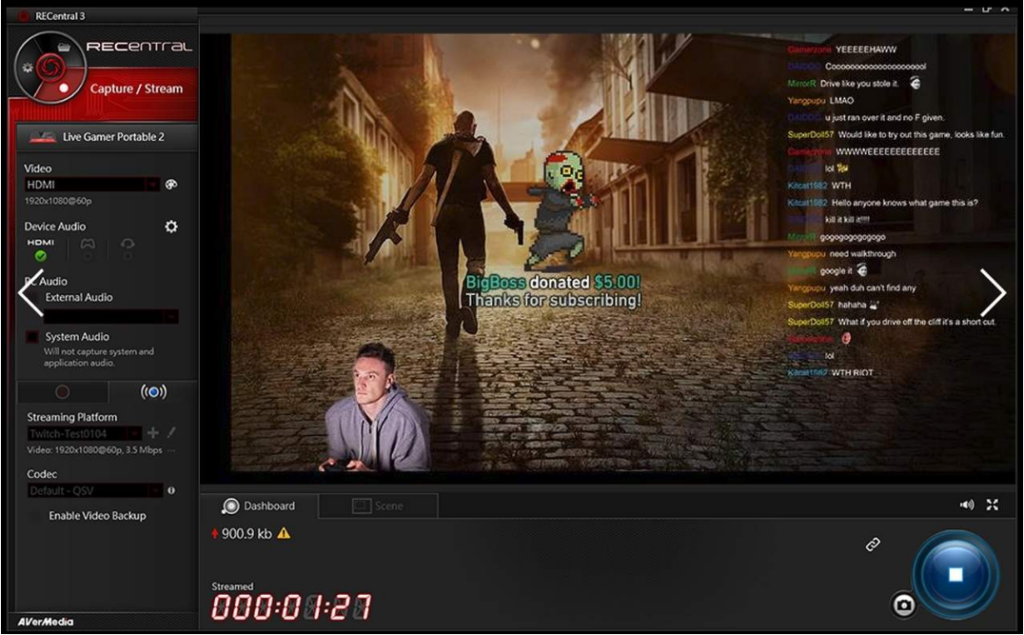
In today's digital era, the boundaries between entertainment, technology, and advertising are increasingly blurred, providing innovative avenues for brands to connect with consumers. One such avenue that has gained significant attention in recent years is in-game advertising, particularly video ads in mobile games. This dynamic market, driven by the proliferation of gaming platforms and the growing popularity of video games, has become a lucrative segment within the broader digital advertising ecosystem. In this article, we will delve into the dynamic landscape of the in-game advertising market, exploring market research insights, growth drivers, challenges, and future prospects.
Understanding the In-Game Advertising Market Landscape
As marketers increase their investments in video advertising, they seek increasingly effective methods and channels to reach their target audiences. According to recent market research reports, the global in-game advertising market is expected to witness significant growth, with a projected compound annual growth rate (CAGR) exceeding 11.8% during the forecast period. Market research indicates that the in-game advertising market size is expected to reach $20.8 billion by 2032, reflecting the growing acceptance of in-game ad placements by advertisers aiming to reach an active audience. This growth is attributed to the rising number of gamers worldwide, advancements in ad delivery technology, and the increasing integration of ads within gaming environments. Video ads in mobile games have emerged as a premium advertising channel, offering an interactive entertainment platform to a broad audience.
Compared to other advertising channels such as Connected TV (CTV), social media, and display advertising, mobile games provide a less cluttered environment. Video ads in mobile games offer a brand-safe space where advertisers can select suitable game genres and target optimal audiences. This enables marketers to reach highly receptive target audiences through prominent ads within mobile games.
Growth Drivers Fueling the In-Game Advertising Market
Expanding Gaming Audience
One of the primary drivers of in-game advertising growth is the expanding global audience of gamers. With the surge in gaming platforms, including consoles, PCs, and mobile devices, gaming has become a mainstream form of entertainment, attracting diverse demographics and providing advertisers with opportunities to reach highly engaged and focused audiences. While many game-centric advertising teams focus on Generation Alpha and Generation Z, Millennials and Generation X play mobile games most frequently. Different game genres attract various types of players, enabling precise audience targeting. The advanced targeting capabilities offered by in-game advertising platforms allow advertisers to tailor campaigns based on demographic, psychographic, and behavioral data, enhancing campaign effectiveness and maximizing return on investment (ROI).
Immersive Advertising Experiences
In-game advertising allows advertisers to create immersive brand experiences within the gaming environment, seamlessly integrating branded content, product placements, and interactive ad formats into games. This immersive approach not only enhances brand recall but also fosters positive associations with the advertised products or services. Additionally, with advancements in data analytics and machine learning technologies, advertisers can better understand player behavior and preferences. This enables more precise ad targeting, increasing the appeal and engagement of ads.
Advanced Targeting Capabilities
Mobile games cater to diverse audiences, providing marketers with rich opportunities to reach various demographic groups. The advanced targeting capabilities offered by in-game advertising platforms allow advertisers to tailor campaigns based on demographic, psychographic, and behavioral data, ensuring that ads are delivered to relevant audiences. This targeted approach increases campaign effectiveness and maximizes advertiser ROI.
Rise of Game Streaming and Esports
The rapid growth of game streaming and esports also provides new opportunities for in-game advertising. By placing ads on streaming platforms, advertisers can reach a large and enthusiastic audience. These viewers not only watch game streams but also actively engage and interact, offering brands increased exposure and engagement opportunities. Additionally, the increasing advertising revenues from esports events inject new growth potential into the in-game advertising market.

Revenue Opportunities for Developers
In-game advertising provides revenue opportunities for game developers, enabling them to generate income through ad placements while offering games to players for free or at reduced costs. This revenue-sharing model incentivizes developers to integrate ads into games, driving the growth of the in-game advertising market. Furthermore, the proliferation of in-game purchases and virtual currencies also provides growth opportunities for the in-game advertising market. Many games attract players to spend through virtual goods and currencies. Developers and advertisers can leverage this trend by offering virtual rewards or discounts through ads, encouraging player engagement and increasing ad effectiveness and brand exposure.
Challenges on the In-Game Advertising Horizon
Despite the vast opportunities the in-game advertising market offers, it also faces challenges that must be addressed to realize its full potential.
Ad Viewability and Engagement Metrics
Measuring the effectiveness of in-game ads can be challenging due to factors such as ad visibility, player engagement, and ad fatigue. Developing standardized metrics and methodologies for evaluating ad performance and ROI remains a key challenge for advertisers and ad tech providers.
Technical Compatibility and User Experience
Different gaming platforms and devices have varying requirements for ad technology, and advertisers need to ensure compatibility across all platforms and devices. This includes not only technical compatibility but also user experience. Advertisers must ensure that ads run smoothly on different devices without negatively impacting the gaming experience.
Ad Fraud and Brand Safety Concerns
Like other digital advertising channels, in-game advertising is susceptible to ad fraud and brand safety risks. Advertisers must implement robust fraud detection mechanisms and ensure a brand-safe environment to protect their brand reputation and ad investments. At the same time, advertisers must ensure that ad campaigns comply with relevant laws and regulations. With increasing player concerns about privacy and data security, advertisers need to take measures to protect player data and transparently inform them about data usage. This requires balancing personalized ads and privacy protection in the ad delivery and data collection process.
Balancing User Experience and Monetization
Integrating ads into the gaming environment without compromising the user experience is a delicate balance that developers and advertisers must achieve. Intrusive or disruptive ads can diminish the gaming experience and alienate players, highlighting the importance of thoughtful ad placements and non-intrusive formats. As the number of ads increases, players may experience ad fatigue and become annoyed. This requires advertisers to be more cautious when placing ads, avoiding excessive or repetitive ads. Advertisers need to find the optimal ad frequency and timing to ensure ad effectiveness without negatively impacting the player’s gaming experience.

Future Trends: The Evolution of In-Game Advertising
By addressing these new challenges and leveraging new growth factors, the in-game advertising market can continue to grow and innovate, becoming an important avenue for brands to connect with consumers. The in-game advertising market is poised for continued growth and innovation, driven by technological advancements, shifts in consumer behavior, and evolving advertising trends. In-game advertising will increasingly expand into emerging gaming platforms such as VR, AR, and cloud gaming, providing advertisers with new opportunities to engage with audiences in immersive and interactive environments. This brings both opportunities and challenges for in-game advertising. Adapting ad formats and targeting strategies to new gaming environments requires continuous innovation and investment in advertising technology solutions.
The in-game advertising market is poised for continued growth and innovation. As the market continues to evolve and expand, it offers abundant opportunities for advertisers, game developers, and ad tech providers. By understanding market dynamics, addressing challenges, and embracing future trends, advertisers, game developers, and ad tech providers can tap into the immense potential of video ads in mobile gaming. This will enable them to create positive brand experiences that resonate with a highly engaged and active audience.